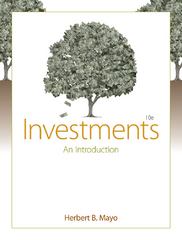Question
A company uses machine hours (MHs) to assign both variable and fixed factory overhead costs to products. Supporting data for the month: Budget Actual Fixed
A company uses machine hours (MHs) to assign both variable and fixed factory overhead costs to products.
Supporting data for the month:
| Budget | Actual | |||||||
| Fixed overhead cost for the month: | ||||||||
| Engineering support (salaries) | $ | 15,800 | $ | 17,900 | ||||
| Factory insurance | 5,800 | 7,900 | ||||||
| Property taxes (factory) | 12,800 | 12,800 | ||||||
| Equipment depreciation (factory) | 14,600 | 14,600 | ||||||
| Supervisory salaries (factory) | 15,500 | 15,500 | ||||||
| Set-up labor | 3,200 | 4,600 | ||||||
| Materials-handling labor | 3,300 | 4,800 | ||||||
| Total | $ | 71,000 | $ | 78,100 | ||||
| Variable overhead costs per MH: | ||||||||
| Electricity | $ | 7.00 | $ | 7.50 | ||||
| Indirect material A | 1.00 | 1.00 | ||||||
| Indirect material B | 4.00 | 4.00 | ||||||
| Indirect labor: Maintenance | 6.00 | 6.00 | ||||||
| Manufacturing supplies | 2.00 | 2.10 | ||||||
| Total | $ | 20.00 | $ | 20.60 | ||||
| Budgeted machine hours | 7,100 | |||||||
| Standard allowed MH for units produced | 6,300 | |||||||
| Actual MH worked during the month | 6,400 | |||||||
The company uses a single overhead account, Factory Overhead, and performs a two-way analysis of the total factory overhead cost variance each month.
Required:
1. To perform the two-way variance analysis, calculate the (a) total factory overhead cost variance, (b) total flexible-budget variance, and (c) the production volume variance for the month. State whether each variance is favorable (F) or unfavorable (U).
2. Provide journal entries to record each of the following separately: (a) actual variable overhead costs, (b) actual fixed overhead costs, and (c) standard variable overhead cost applied to production, and (d) standard fixed overhead cost applied to production. Note: Accrued payroll costs are recorded in Salaries and Wages Payable, while transactions regarding indirect materials and manufacturing supplies are recorded in the Indirect Materials Inventory account.
3. Provide a single journal entry to record the two variances in Requirement 1 (i.e. total flexible-budget variance and the production volume variance).
4. Provide a single journal entry to close these two variances to the Cost of Goods Sold (COGS) account, assuming that the variances calculated above represent net overhead cost variances for the year.
Step by Step Solution
There are 3 Steps involved in it
Step: 1

Get Instant Access to Expert-Tailored Solutions
See step-by-step solutions with expert insights and AI powered tools for academic success
Step: 2

Step: 3

Ace Your Homework with AI
Get the answers you need in no time with our AI-driven, step-by-step assistance
Get Started


